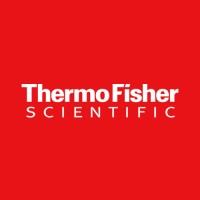CD137L / PerCP-eFluor 710 / TKS-1
Product Details
| Description | CD137 Ligand (4-1BB Ligand) Monoclonal Antibody (TKS-1), PerCP-eFluor 710, eBioscience | |
|---|---|---|
| Conjugate | PerCP-eFluor 710 | |
| Clone | TKS-1 | |
| Target Species | Mouse | |
| Applications | FC | |
| Supplier | Thermo Fisher Scientific | |
| Catalog # | Sign in to view product details, citations, and spectra | |
| Size | ||
| Price | ||
| Antigen | ||
| Host | ||
| Isotype |
About CD137L
The protein encoded by this gene is a cytokine that belongs to the tumor necrosis factor (TNF) ligand family. This transmembrane cytokine is a bidirectional signal transducer that acts as a ligand for TNFRSF9/4-1BB, which is a costimulatory receptor molecule in T lymphocytes. This cytokine and its receptor are involved in the antigen presentation process and in the generation of cytotoxic T cells. The receptor TNFRSF9/4-1BB is absent from resting T lymphocytes but rapidly expressed upon antigenic stimulation. The ligand encoded by this gene, TNFSF9/4-1BBL, has been shown to reactivate anergic T lymphocytes in addition to promoting T lymphocyte proliferation. This cytokine has also been shown to be required for the optimal CD8 responses in CD8 T cells. This cytokine is expressed in carcinoma cell lines, and is thought to be involved in T cell-tumor cell interaction.[provided by RefSeq, Oct 2008]
The protein encoded by this gene is a cytokine that belongs to the tumor necrosis factor (TNF) ligand family. This transmembrane cytokine is a bidirectional signal transducer that acts as a ligand for TNFRSF9/4-1BB, which is a costimulatory receptor molecule in T lymphocytes. This cytokine and its receptor are involved in the antigen presentation process and in the generation of cytotoxic T cells. The receptor TNFRSF9/4-1BB is absent from resting T lymphocytes but rapidly expressed upon antigenic stimulation. The ligand encoded by this gene, TNFSF9/4-1BBL, has been shown to reactivate anergic T lymphocytes in addition to promoting T lymphocyte proliferation. This cytokine has also been shown to be required for the optimal CD8 responses in CD8 T cells. This cytokine is expressed in carcinoma cell lines, and is thought to be involved in T cell-tumor cell interaction.[provided by RefSeq, Oct 2008]
About PerCP-eFluor 710
PerCP-eFluor™ 710 (PerCP-eF710) is a red-emitting tandem fluorophore that combines PerCP and eF710. The donor molecule, PerCP can be excited by the 488-nm blue laser and and transfers energy to the acceptor molecule, eF710, which emitts light that can be captured with a 695/40 nm bandpass filter. PerCP-eF710 has an excitation peak at 482 nm and an emission peak at 710 nm, and is considered a slightly-red shifted but brighter alternative to PerCP-Cy5.5. This dye and associated products are mostly used for flow cytometry. This dye is part of the larger eFluor™ dye family, developed by eBioscience which is now part of ThermoFisher Scientific.
PerCP-eFluor™ 710 (PerCP-eF710) is a red-emitting tandem fluorophore that combines PerCP and eF710. The donor molecule, PerCP can be excited by the 488-nm blue laser and and transfers energy to the acceptor molecule, eF710, which emitts light that can be captured with a 695/40 nm bandpass filter. PerCP-eF710 has an excitation peak at 482 nm and an emission peak at 710 nm, and is considered a slightly-red shifted but brighter alternative to PerCP-Cy5.5. This dye and associated products are mostly used for flow cytometry. This dye is part of the larger eFluor™ dye family, developed by eBioscience which is now part of ThermoFisher Scientific.
Experiment Design Tools
Panel Builders
Looking to design a Microscopy or Flow Cytometry experiment?
Validation References
Reviews & Ratings
| Reviews |
|---|
Looking for more options?
659 CD137L antibodies from over 30 suppliers available with over 66 conjugates.





